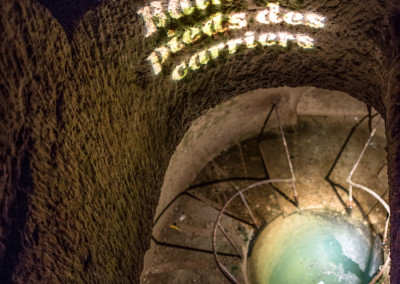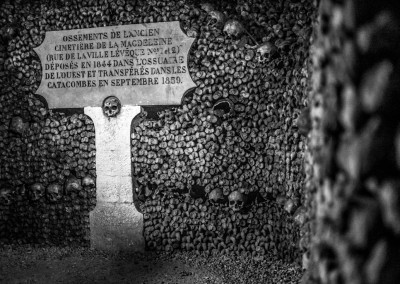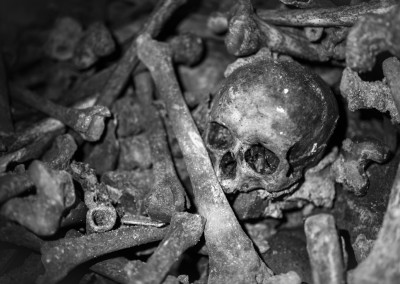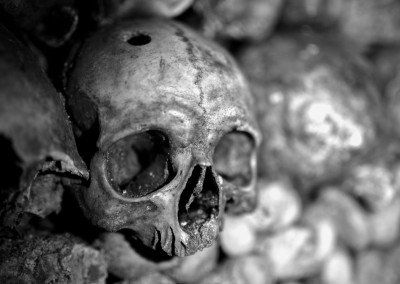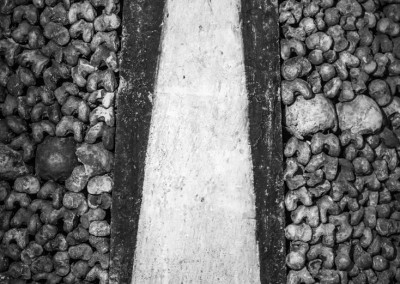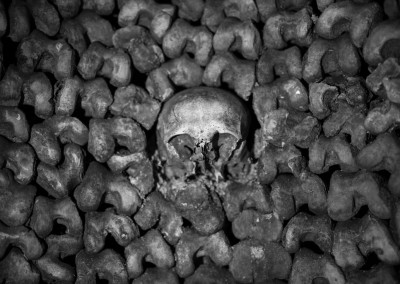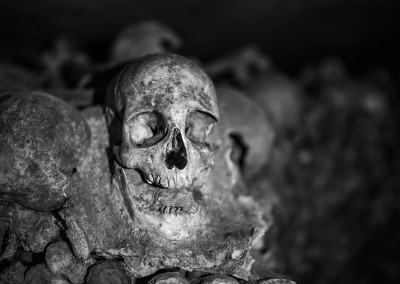As early as the late 12th century Paris had a problem: their dead were rising from the ground. By the late 1700s there had been so many people buried in the city of Paris that there was no remaining space to bury anyone else and the city’s cemeteries were condemned.
In the Parisian suburbs (at that time) there existed a series of underground tunnels where limestone was mined to build the city (today this lies beneath the 14th arr.). Louis XVI made the decision to exhume the bones of many who were buried in the city and move them into a portion of these old quarries. Over the span of some years cemeteries would be dug up and the remains moved under the cover of night into the tunnels. Thus began the Paris catacombs.
At that time the catacombs essentially amounted to piles of bones scattered throughout underground tunnels. In the early 1800s Louis Etienne Hericart de Thury was given the task of transforming the catacombs into a place people could visit. Under his lead the bones were organized and stacked into patterns of femurs and skulls lining the walls, providing pathways where people could pass through and view the remains of the millions of people whose former bodies inhabited the tunnels.
Fast forward a couple hundred years and I traveled to Paris, and from there to Barcelona. It was first visit to both cities, and it’s the photographing churches that mainly brought me there as I have a project photographing churches. My plan was to head to Barcelona from Paris, photograph Sagrada Familia there, and then head back to Paris where I will photograph several other churches.
I brought my Nikon D600 and D800 as well as my 24-70mm f/2.8, 14-24mm f/2.8, and Sigma 35mm f/1.4 DG HSM lenses for the trip but when it came down to shooting in the catacombs I grabbed my D600 and the Sigma 35mm f/1.4 Art lens thinking it would be needed in the near darkness underground. Because of an earlier verbal lashing in French regarding my tripod, of which I could only understand the emphatic “NO,” I decided it was unlikely they’d let me use it in the catacombs so I left it at home.
8 Euros and a bag inspection later (“Camera?”, they ask) I descended down the spiral staircase and through the tunnels to a sign inviting me to enter the ossuary, provided I don’t touch or smoke.
It’s quite the sight to behold. There are seemingly endless rows of remains on each side, and it is just as dark as you expect. It’s surreal and beautiful at the same time. As anticipated they don’t allow tripods, and as unanticipated they don’t allow flash. They do, however, allow flashlights so I was able to pull out my iPhone 5 and turn on the flashlight, holding the phone in one hand and my camera with the other. That’s something good to keep in mind. If you do go shoot in the catacombs it’s not a bad idea to bring a separate flashlight. Shooting wide open at f/1.4 with the iPhone’s flashlight I was able to shoot, at best, around ISO 1600 at 1/60 sec. as long as I stayed close to my subject.
To view the full Paris Catacombs gallery see below or click here.


